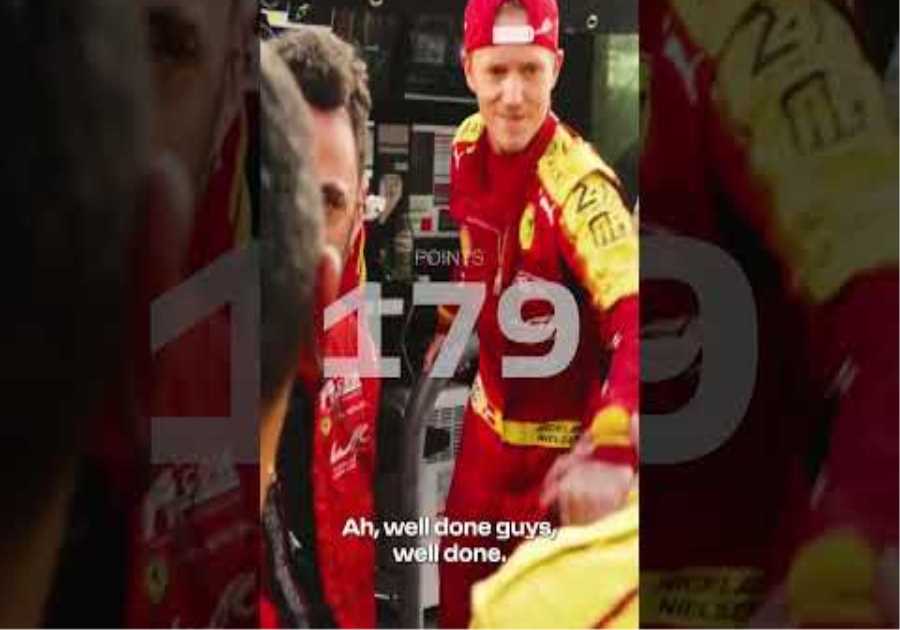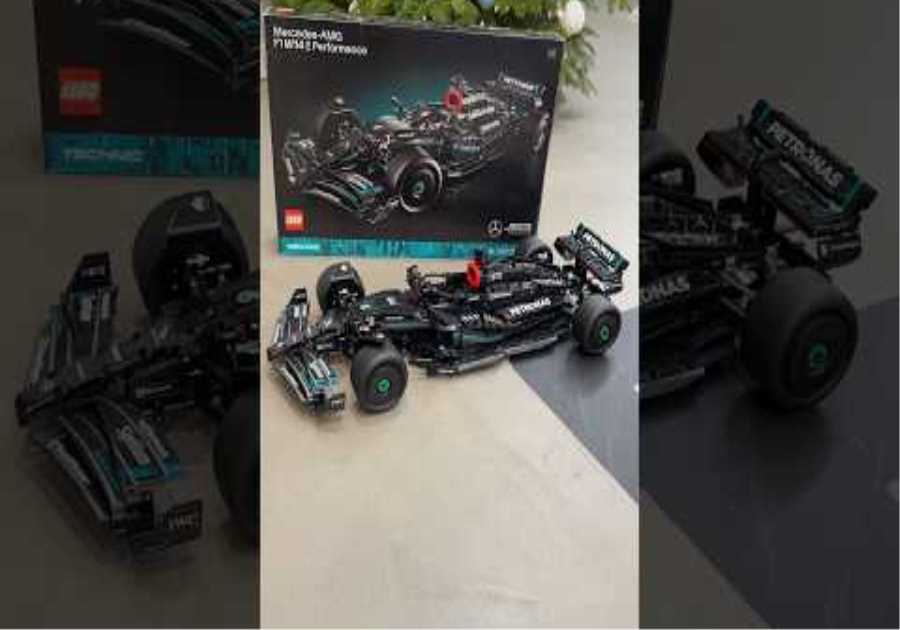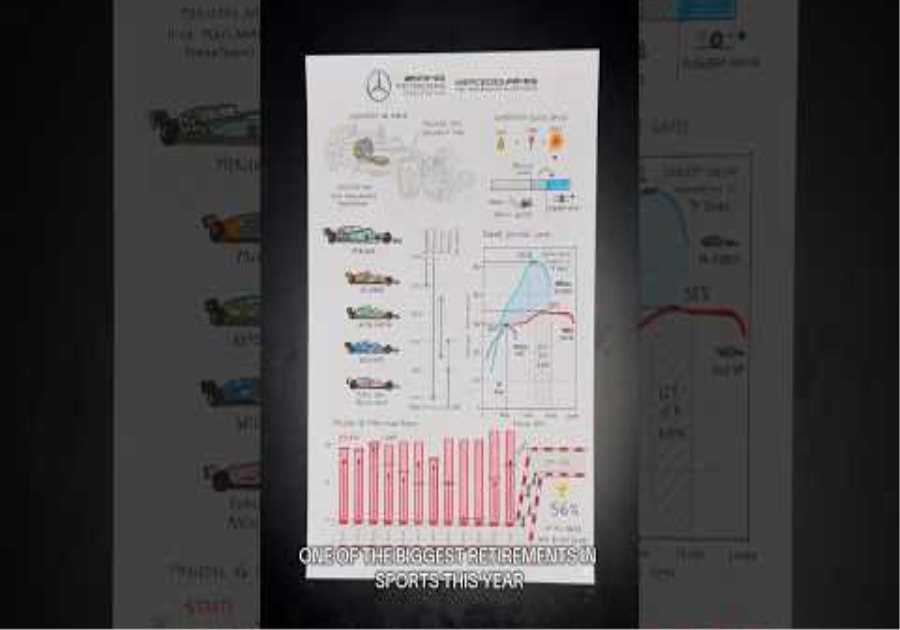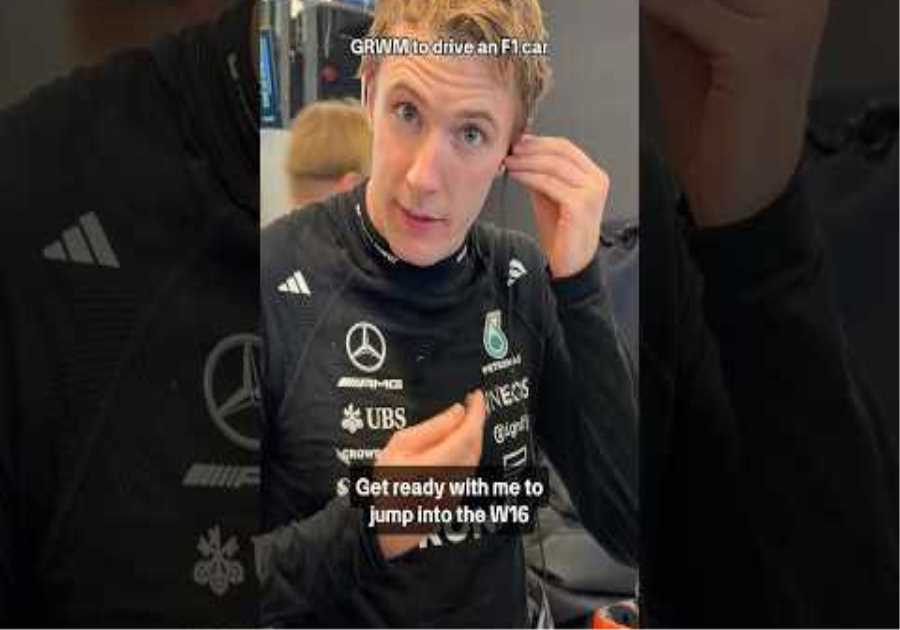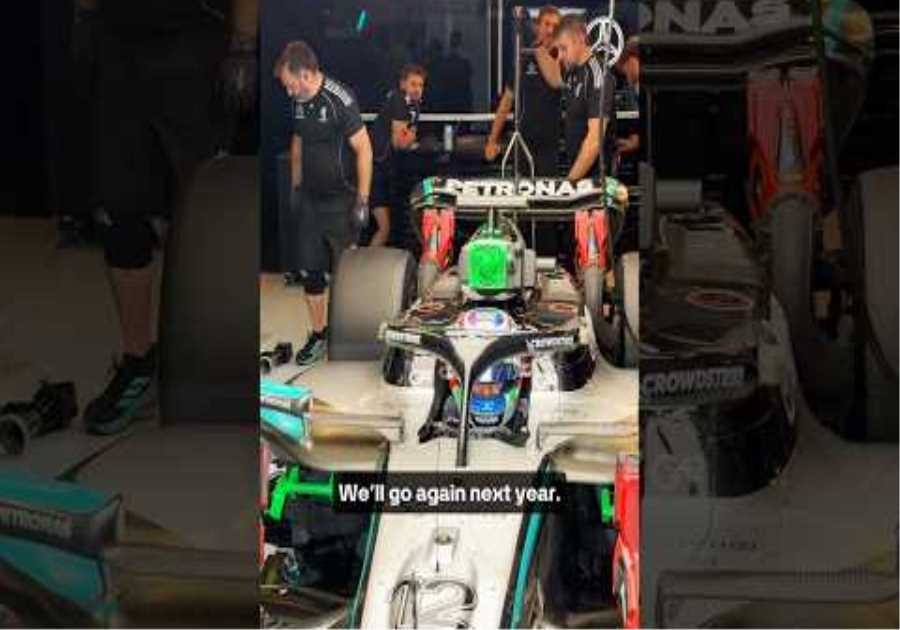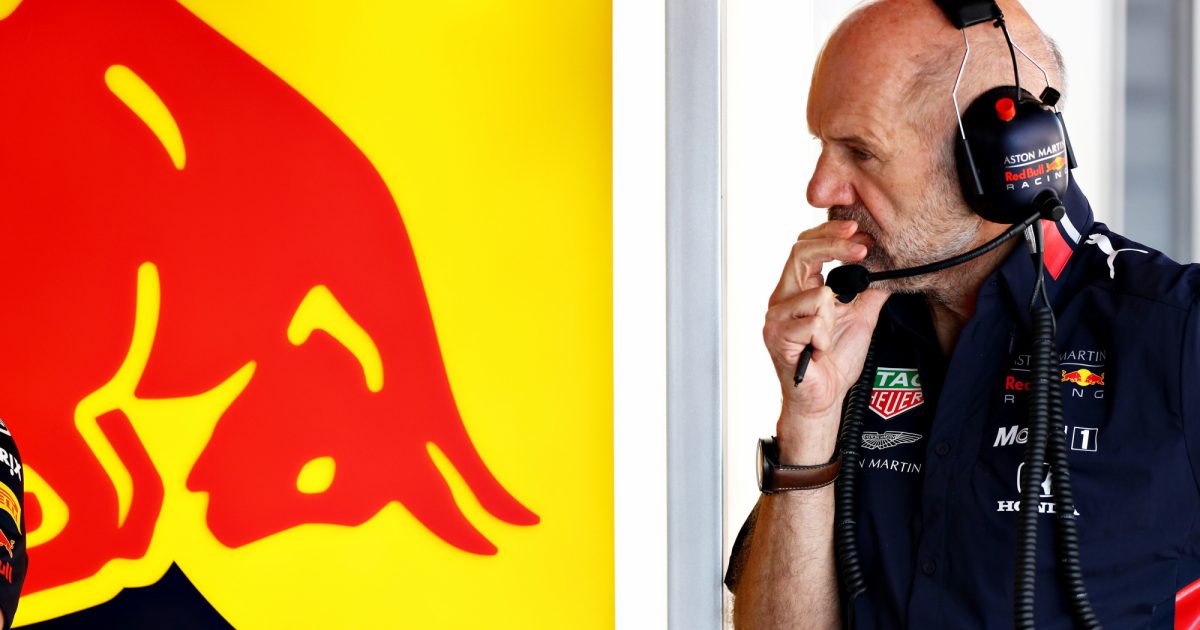
2022 delivered various milestones for RacingNews365, including a number of one-to-one interviews with Formula 1’s movers and shakers – ranging from FIA President Mohammed Ben Sulayem and the Emirati’s Deputy President for Sport Robert Reid (twice each), Red Bull boss Christian Horner (thrice), double world champion Max Verstappen and his closest challenger Charles Leclerc.
On the technical front we were the first publication invited to experience Audi’s evolving F1 facility and the first to venture inside Ferrari to learn how Haas team operates from within the bowels of another team. My favorite interview was, though, initially granted not for F1 purposes, but about the nascent Adrian Newey-conceived Red Bull’s RB17 two-seater project which I had gotten wind of.
Come the scheduled time and date – during the Bahrain Grand Prix, ahead of the season’s opening race – the team’s Chief Technical Officer, who seldom grants one-on-ones, requested a delay but suggested a broader interview, promising a later chat about what can only be described as a ‘hyper-supercar’.
Thus, where most publications battle to speak once to arguably F1’s greatest-ever design engineer, we were fortunate to do so twice in a year. Newey is not only F1’s most successful engineer, having won multiple constructors titles with Williams, McLaren and Red Bull, but counts amongst the sport’s most innovative.
Six world champions – Nigel Mansell, Damon Hill, Jacques Villeneuve, Mika Häkkinen, Sebastian Vettel and Verstappen – won titles in Newey-designed cars, with the Dutchman adding a second crown via a record-breaking 17 grand prix victories with RB18, which was clearly least affected by the ‘porpoising’ phenomenon brought about by 2022’s ‘ground effects’ regulations.
The journey into F1’s new era of the sport was bumpy in every sense as teams faced numerous technical challenges, but virtually throughout Newey’s RB18 reigned supreme, which made our Bahrain interview so special. As for RB17: By late June Newey was ready to talk about the ‘skunk-works’ project, revealing that his latest design bristles with F1 technologies, many of them banned for the premier formula…

© Dieter Rencken spoken with Adrian Newey | RacingNews365
Newey on the state of Formula 1
DR: What is porpoising?
AN: ‘When you have a set of aerodynamic regulations that allow ground effect, the closer the car gets to the ground, the more downforce it gives. If those vortices that provide the downforce stall or separate, you lose downforce, the car springs back up, then the cycle repeats itself.
‘It’s nothing new – the ground effect cars of the late 70s/early 80s had it. Many Group C cars and so forth struggled with it, including the current crop of LMP2 cars, etc. It’s perhaps unknown to the younger generation of aerodynamicists, but it’s well-known.’
DR: If it’s not new, why is it so difficult to simulate?
AN: ‘The first problem is wind tunnel models are rigidly held. If you hold the car rigidly, you won’t see the problem. People have tried to do transient movements of wind tunnel models, but that’s a whole art form.
‘If you have a car on the track bouncing at [a rate of] hertz, you need a higher frequency for the scale model, which creates dynamic problems. If you had a full-size model, you’d be able to replicate it far better [but] then you need to suspend the car non-rigidly.’
DR: How difficult is it to solve?
AN: ‘First of all, you need to understand the problem, which is not easy. After that, it’s coming up with solutions which reduce the problem without losing downforce. You’re into a classic performance versus [driver] comfort trade off….’
DR: Is this porpoising at a different point of the car to previously?
AN: ‘I was still at university so can’t completely answer the question. I think the phenomenon of flow structures breaking down is the same, but these cars are aerodynamically reasonably complicated underneath, so I think there are differences. What’s going on and what’s breaking down will vary from team to team.’
DR: How do you find these new tires?
AN: ‘Taking the new tire parameters compared to those from the last few years, the rim diameter change hasn’t particularly changed anything because the respective sidewall behaviors are about the same. The sidewall governs the stiffness and characteristics of the tyre, so they’re a little different and we’re still in the early days of understanding them.
‘They don’t obviously seem to be hugely different to previous generation Pirellis but are a lot heavier. Personally, I find the reason behind going to these big rims to make it look more like a road car a bit of a funny thing to do.’
DR: Does this lower profile tire allow you to control suspension better?
AN: ‘The sidewalls have very similar behavior; the tires are just bigger. The rim diameter has gone up, the overall diameter has gone up and the sidewall isn’t a lot shallower. The bottom line is that the tire damping rate is about the same, so there’s very little change there.’
DR: How do you conceptualize the aerodynamics of these cars?
AN: ‘I think the principle of trying to help cars to overtake by reducing the sensitivity of the following car to the one in front is okay, and I think it will help overtaking a bit, but it won’t be a significant shift.
‘These are the biggest aerodynamics regulation changes we’ve had since F1 banned venturi cars at the end of 1982. With such a significant regulation change there will inevitably be all sorts of other changes, so it’s probably going to spread the grid of cars in the early seasons. I think there are different ways it could have been done.
‘You’ve got cars that have a 900kg start line weight, so you’re into what used to be heavy for sports cars. In a few years the weight has gone from low-600kg to cars that are over 800 kilos [dry] and we’re working like mad to try and get to that to the currently prescribed minimum of 798kg.
‘The cars have got bigger and heavier and are aerodynamically not particularly efficient because they have lots of drag. I think it is a bit of a shame Formula 1 has gone in this direction.
‘Obviously, this (wrong) direction is the same direction the automotive industry has gone recently, with people driving bigger and heavier cars and and obsessing about whether it’s battery or petrol. The biggest single problem is the amount of energy it takes to move the thing, regardless of where the energy comes from.’
‘Getting cars to the minimum weight limit for a lot of teams is the big challenge of 2022.’

© XPBimages
DR: How has the budget cap affected development?
AN: ‘It is difficult for everybody. I agree that Formula 1 needs to avoid an arms race and reduce costs. Whether you do it by cost cap – which is the route Formula 1 has taken – or by other means is debatable. Trying to do it financially is very complicated and I’m sure there will be people taking liberties in some areas. It’s a difficult thing to police to the nth degree.
‘You could say, if you can’t police it, does the last 5% matter? The problem is we all have an enormous overhead, so the bit you have left over [in the cap after the car is built] is the bit you put into development, so those last few percent do make a big difference.
DR: Do you find it is more of an engineering challenge to design a car to a set of combined financial and technical regulations?
AN: ‘I don’t mind because it’s another constraint; it’s another interesting thing to take into account. What I fear is insufficient room for maneuver yet potentially still enough room for fairness. Also: like many teams we unfortunately had to let people go, and it doesn’t feel right.’
DR: How does this era compare to previous ones?
AN: ‘Nowadays we have this incredibly tight and lengthy rulebook that very much constrains the shape of the cars. On the other hand, we have fantastic research tools which means we have a decent level of understanding. However, you still get surprises and the porpoising is a perfect example.
‘By and large the cars perform as had been expected, particularly once we understood them. Usually, if there are significant regulation changes they are not too dramatic if the cars are well understood. It’s unusual to get nasty surprises.’
DR: F1 added 3 kilos to the minimum weight limit to make weight-saving less intense [costly]. Does it make such a difference?
AN: ‘You have got to remember that, roughly speaking and of course, it varies from circuit to circuit you’re talking approximately 3/8 of a second per 10 kilos of car weight. So that weight difference is around 1/8 of a second. I don’t have a benchmark figure saved per kilo or 10 kilos saved in terms of cost, but it must be enormous in truth.’
(Note: At the time Newey would not be drawn on excess weight carried by RB18, but an insider subsequently revealed to RacingNews365 that it was in the vicinity of 12kg.)

© XPB
DR: What would be your ideal regulations for a Formula 1 car?
AN: ‘Light weight and aerodynamic efficiency are the two most important features. Formula 1 talks about road relevance, and it has its place in popularizing certain areas in the showroom. Carbon fiber trim is an undeniable example of that; paddle-shift gear change is another.
‘When the turbo era of the 1980s got underway the automotive market saw more turbocharged cars being produced. Whilst there may not be any direct technical exchange, in terms of popularizing trends, F1 can affect things. Correctly, ecology is currently a massive subject.
‘Formula 1 can and should play its part, but there is this debate about where your energy should come from, whether it’s electrical, biofuels, synthetic fuel, hydrogen, etc. There is a lot of misinformation, particularly on the electric side.
‘People are realizing that the carbon footprint of manufacturing and disposing of electric vehicles is much higher than that of petrol cars. The assumption that electricity that comes from wind or solar is somehow zero emissions is not valid. Wind turbines, particularly offshore ones, have tremendous amounts of concrete that goes into putting their structures in place.
‘Concrete is one of the worst things for CO₂ emissions. There is a lot of aluminum and copper in these structures, which are also polluting materials in the manufacturing phase. What nobody is not talking about is the amount of energy that is used to move the vehicle.
‘At the moment car manufacturers get a dispensation if they make their cars bigger and heavier but less polluting at the tailpipe. Where is the logic in that? It is driven by governments, who are lobbied by car manufacturers – very much like in motor racing.
‘Some of the changes that happen in Formula 1 are a result of lobbying. In terms of where we need to get to is smaller, lighter cars that are more energy-efficient.
‘Formula 1 can play its part here but with these new rules, Formula 1 has done precisely the opposite…
Part 2 coming up
Keep an eye out for the second part of Dieter Rencken’s conversations with Adrian Newey, which will go live from midday 1st January, where he discusses the Red Bull RB17 hypercar
Don’t miss out on any of the F1 action thanks to this handy 2023 F1 calendar that can be easily loaded into your smartphone or PC.
Download our F1 calendar

